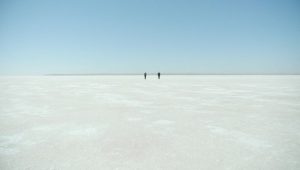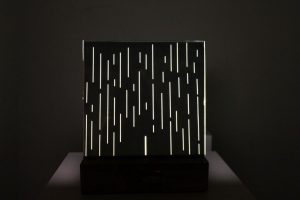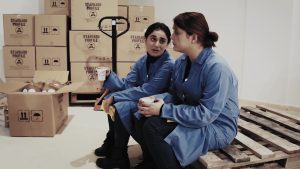CALX RUDERALIS SUBSP. ISTANBULENSIS
Curator: Yasemin Ülgen
Art Talk: Elif Kendir-Beraha, Aslıhan Demirtaş, Ali Mahmut Demirel & Yasemin Ülgen
16.11.2024
Bilsart presents Elif Kendir-Beraha, Aslıhan Demirtaş, Ali Mahmut Demirel’s “Calx ruderalis subsp. Istanbulensis”, curated by Yasemin Ülgen, from November 16 to November 30, 2024.
Calx ruderalis subsp. Istanbulensis (CRI; binomial nomenclature expressly proposed for the taxonomy of anthropogenic geological formations, usually reserved for the classification of living species) is an exemplary formation of the current geological era often found on the Princes’ Islands near Istanbul, a suburban archipelago in the Marmara Sea. A protected urban and historical site since 1984 without motorized traffic, the Princes’ Islands present a stark contrast to the congestion and rapid urban growth within the rest of the city, whose littoral zones constitute a litmus test for the effects of construction waste on marine and terrestrial ecosystems of Istanbul. The best examples of CRI can be found in the Natural History Museum of Istanbul (NHMI). NHMI holds the first collection of its kind; its specimens are collected following the maxim “staying with the trouble” (Haraway, 2016) according to the principles of neo-natural science based on qualitative research, occasionally complemented by quantitative data. The work presented is a video entry for CRI and comprises meanings, concepts, definitions, characteristics, metaphors, symbols, and descriptions of things in several media, but not its counts or measures. In the video, the compressed timescale of this feral geological entity is revealed through a minute observation of its immediate surroundings juxtaposed with its recently formed qualities. What does the inclusion of CRI as a natural formation in a subverted museum of natural history based on qualitative research say about today and the future? What other reasonings and positionings can the research produce beyond the condemnation and criticism of the forces and systems which act upon Istanbul, its growth cycle, and the rights of its non-human residents?
The video was produced within the scope of the 29.9 km program organized by birbuçuk as part of the Istanbul Unbound, 2021 conference.
Sound: Fulya Peker, Müzik: Deniz Doğançay
Click here for the press kit.
ABOUT ELİF KENDİR-BERAHA
Elif Kendir-Beraha is an architect and researcher who reflects on bodies, geographies, local ways of knowing and the phenomenology of matter. She completed her PhD on traditional Anatolian stonemasonry as a case study displaying the impact of making and craft knowledge on architectural conception at RMIT University. She has a MScAAD from Columbia University, and a BArch and MArch from the Middle East Technical University. During her bachelor studies at METU, she produced short video works at the Audio-Visual Systems Research Center, and took sociology of fine arts and aesthetics classes from the departments of Sociology and Philosophy. She has exhibited her work solo and as part of FOL Collective, an art-design research collaboration founded with Ceren Balkır Övünç. She continues her academic research at Istanbul Bilgi University, and her artistic research at Salti 19, an artist-run initiative, of which she is a co-founder.
ABOUT ASLIHAN DEMİRTAŞ
Aslıhan Demirtaş is the founder of KHORA Office, an expanded architectural practice based on research, art and ecology, established first in New York, now based in Istanbul. Her practice is situated on and around the boundaries of disciplines engaged in making and asking, formally manifested as buildings, gardens, installations, research as well as design studios. Aslıhan has an undergraduate degree from METU and a graduate degree from MIT. Prior to establishing her own practice, she worked for Pritzker Laureate I.M. Pei as the lead designer for the Museum of Islamic Arts in Doha, Qatar and the Miho Chapel in Japan. Demirtaş, is a Graham Foundation Grant recipient for her book Graft to be published by SALT which contemplates on the relationship between modernity and nature through hydraulic infrastructures. In 2022, Demirtaş took part in the technical evaluation commission of the 15th Aga Khan Architecture Awards. She is an active member of the Initiative for the Protection of the Historical Yedikule Urban Gardens and is a founding star of Anatopia Coop.
ABOUT ALİ MAHMUT DEMİREL
Ali Mahmut Demirel is a Berlin-based artist. Demirel studied nuclear engineering and architecture before pursuing art. He started to make video and sound work in the early 90’s while he was a researcher at Middle East Technical University, Audio-Visual Systems Research Center. In the 2000’s, he focused his work on real-time computer-generated images and began to create interactive live audio-visual performances. In 2015, Demirel returned to video installation work and created a trilogy under the theme ‘Post-Apocalyptic Utopias.’ Those videos formed Demirel’s solo show titled ‘ISLE’ at Arter Istanbul in 2018. Recently he is working on a series that connects ecology, nature and myth, through an exploration of specific geographies where notable mythologies emerged.







